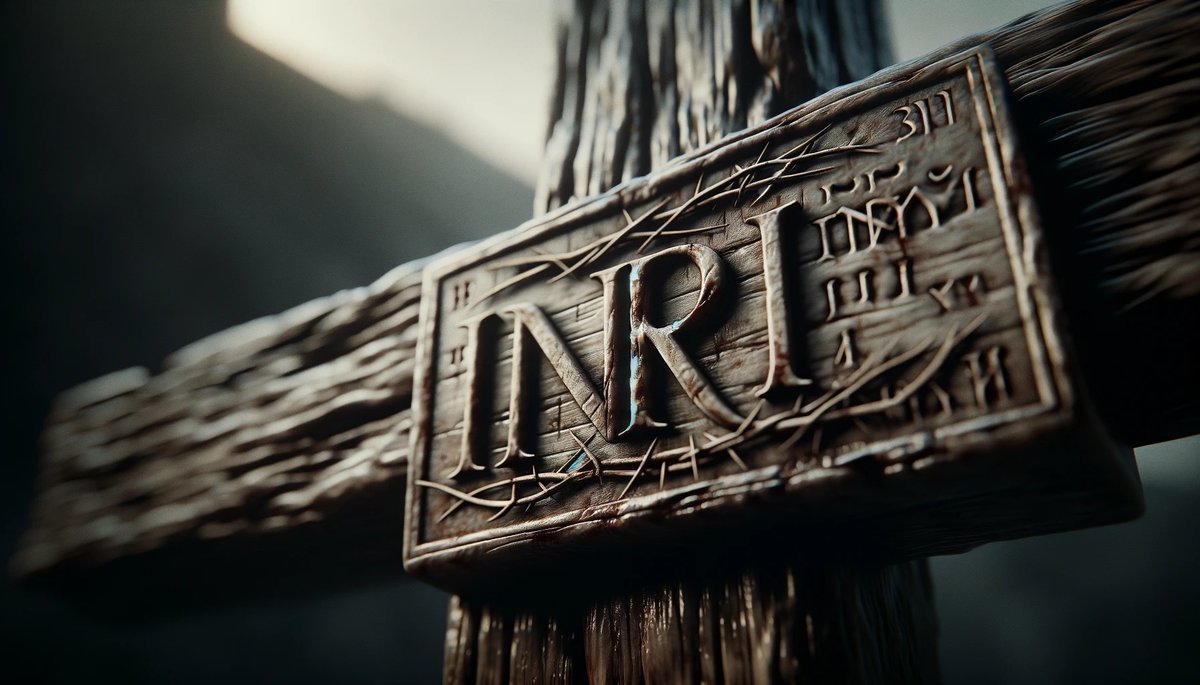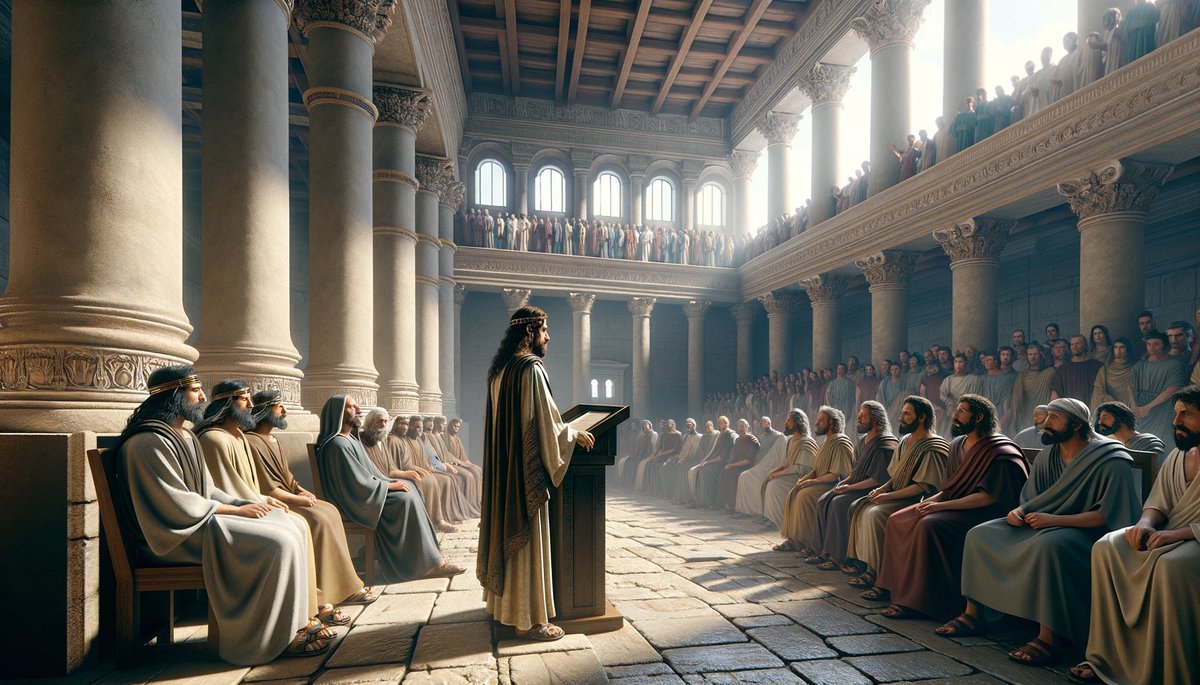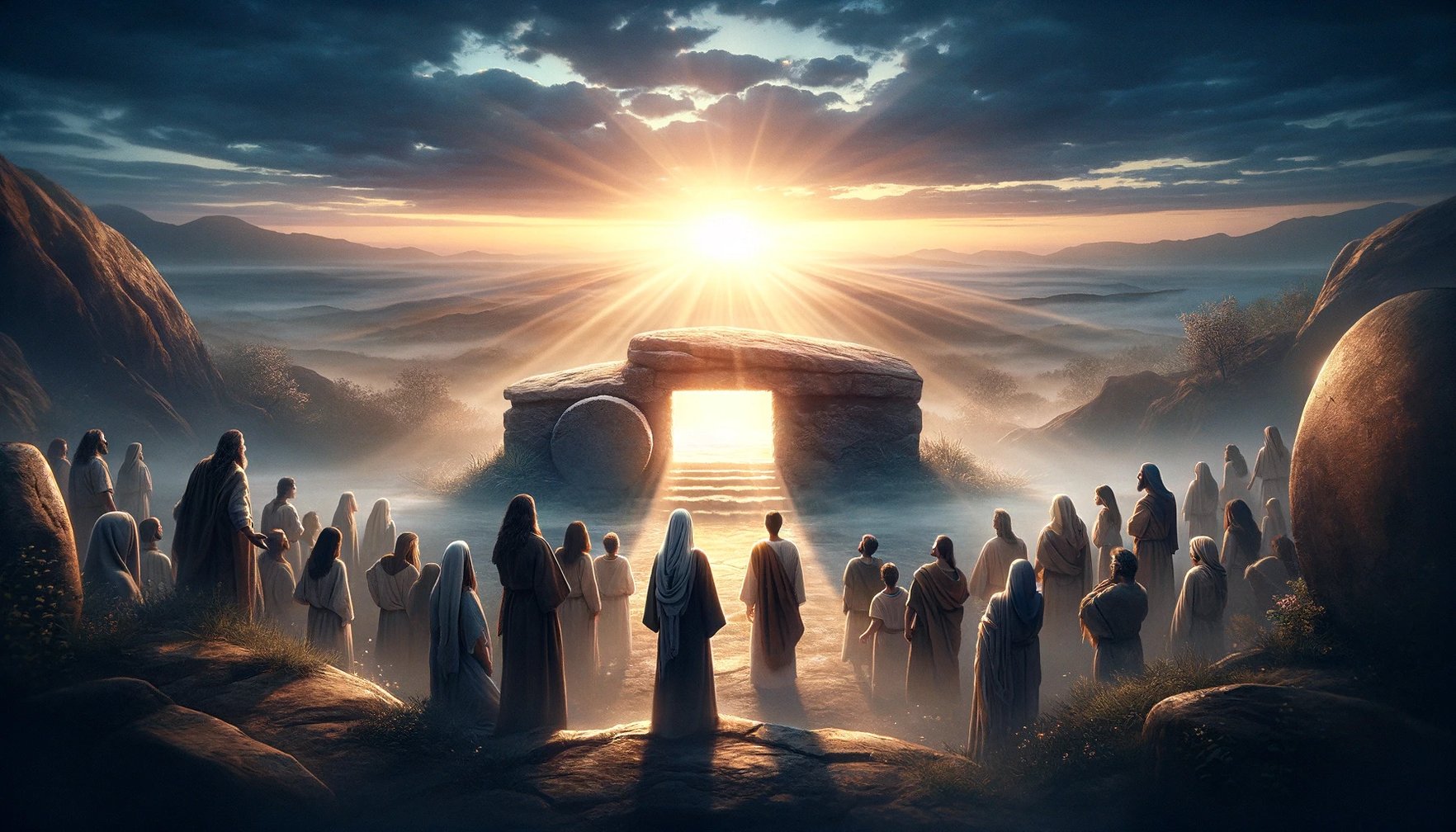Home>Christian Videos>Bible Stories>What Is The Meaning Of INRI On The Cross Of Jesus Christ


Bible Stories
What Is The Meaning Of INRI On The Cross Of Jesus Christ
Published: March 2, 2024
Ericka Andersen, an editor at Christian.net, expertly merges digital strategy with content creation, focusing on faith and societal issues. Her communication skills enhance the platform's engaging narratives, fostering meaningful dialogue on belief's impact on society.
Discover the significance of "INRI" on the cross of Jesus Christ and explore its biblical context. Uncover the meaning of this symbol in the context of Bible stories.
(Many of the links in this article redirect to a specific reviewed product. Your purchase of these products through affiliate links helps to generate commission for Christian.net, at no extra cost. Learn more)
Table of Contents
The History of the INRI Inscription
The INRI inscription on the cross of Jesus Christ has a rich historical background that dates back to the crucifixion of Jesus. INRI is an abbreviation for the Latin phrase "Iesus Nazarenus, Rex Iudaeorum," which translates to "Jesus of Nazareth, the King of the Jews." The use of Latin in the inscription reflects the influence of the Roman Empire during the time of Jesus. It was a common practice for the Romans to display the charges against criminals in three languages: Hebrew, Latin, and Greek. The INRI inscription on the cross of Jesus Christ is a poignant reminder of the historical and religious significance of the crucifixion.
The INRI inscription has been a subject of fascination and contemplation for centuries, as it represents a pivotal moment in Christian history. The inscription serves as a powerful symbol of Jesus' identity as the King of the Jews, as well as a testament to the events that unfolded during his crucifixion. The historical context of the INRI inscription provides valuable insights into the religious and political dynamics of the time, shedding light on the complex interplay between the Roman authorities and the Jewish community.
The INRI inscription on the cross of Jesus Christ has endured through the ages, serving as a tangible link to the events of the crucifixion. Its historical significance is deeply rooted in the narrative of Jesus' final moments, and it continues to evoke contemplation and reverence among Christians worldwide. The history of the INRI inscription is a testament to the enduring impact of Jesus' crucifixion and the profound symbolism associated with the cross.
Read more: What Is The Meaning Of Cross Of Jesus Christ
The Interpretation of the INRI Inscription
-
Biblical Interpretation: In the context of the Bible, the INRI inscription holds significant theological implications. It signifies Jesus' identity as the prophesied Messiah and the King of the Jews, as foretold in the Old Testament scriptures. The inscription serves as a fulfillment of the Messianic prophecies, underscoring Jesus' divine purpose and sovereignty. For Christians, the INRI inscription is a poignant reminder of Jesus' sacrificial love and his role as the savior of humanity.
-
Cultural and Political Interpretation: Beyond its religious connotations, the INRI inscription also carries cultural and political significance. During the time of Jesus, the title "King of the Jews" was a point of contention between the Jewish leaders and the Roman authorities. The inscription on the cross reflects the complex dynamics of power and authority, highlighting the clash between religious and political interests. It serves as a symbol of Jesus' subversive kingship, which transcends earthly realms and challenges the established order.
-
Personal and Spiritual Interpretation: On a personal and spiritual level, the INRI inscription invites contemplation on the nature of kingship and the redemptive message of the cross. It prompts individuals to reflect on their own understanding of Jesus' kingship and the implications for their lives. The inscription serves as a catalyst for introspection, inviting believers to consider the profound implications of Jesus' crucifixion and the transformative power of his kingship in their spiritual journey.
-
Universal Interpretation: The INRI inscription transcends cultural and linguistic barriers, resonating with people across diverse backgrounds. Its universal message of redemption and kingship speaks to the human experience, transcending historical and geographical boundaries. The inscription serves as a unifying symbol of faith, reminding believers of the enduring impact of Jesus' life, death, and resurrection. It encapsulates the universal significance of Jesus' kingship and his redemptive mission for all of humanity.
The interpretation of the INRI inscription encompasses a multifaceted understanding that spans theological, cultural, personal, and universal dimensions. It invites individuals to delve into the profound implications of Jesus' identity as the King of the Jews and the transformative power of his crucifixion.
The Symbolism of the INRI Inscription
-
Representation of Authority: The INRI inscription symbolizes Jesus' authority as the King of the Jews, signifying his divine sovereignty and leadership. It serves as a visual proclamation of Jesus' kingship, transcending earthly realms and asserting his eternal reign. The inscription encapsulates the paradoxical nature of Jesus' kingship, which defies conventional notions of power and dominion, emphasizing humility and sacrificial love.
-
Redemptive Purpose: The INRI inscription embodies the redemptive purpose of Jesus' crucifixion, representing the culmination of God's plan for salvation. It serves as a symbol of hope and reconciliation, conveying the transformative power of Jesus' sacrifice on the cross. The inscription reminds believers of the profound significance of Jesus' atoning death, offering redemption and forgiveness to all who embrace his kingship.
-
Suffering and Triumph: The INRI inscription juxtaposes the suffering and triumph of Jesus, encapsulating the paradox of the cross. It symbolizes the agony and anguish endured by Jesus during his crucifixion, while also pointing to the ultimate victory of his resurrection. The inscription serves as a powerful reminder of the transformative journey from suffering to triumph, embodying the hope and joy that emanate from Jesus' redemptive work.
-
Universal Kingship: The INRI inscription signifies Jesus' universal kingship, extending beyond the confines of a specific cultural or historical context. It represents the inclusive nature of Jesus' reign, embracing people from all nations and backgrounds. The inscription serves as a unifying symbol of faith, transcending linguistic and cultural barriers, and affirming Jesus' kingship as a source of unity and reconciliation for humanity.
-
Eternal Legacy: The INRI inscription carries the enduring legacy of Jesus' kingship, resonating across generations and cultures. It symbolizes the timeless relevance of Jesus' redemptive mission, offering a message of hope and salvation to all who encounter the cross. The inscription serves as a testament to the enduring impact of Jesus' life, death, and resurrection, perpetuating his legacy as the King of Kings and the Lord of Lords.
The symbolism of the INRI inscription encompasses profound theological, redemptive, and universal implications, inviting believers to contemplate the multifaceted significance of Jesus' kingship and the transformative power of his crucifixion.
The Significance of the INRI Inscription in Christianity
The INRI inscription holds profound significance in Christianity, serving as a poignant symbol of Jesus' identity as the King of the Jews and the redemptive message of the cross. Its significance permeates the core beliefs and practices of the Christian faith, shaping the theological understanding of Jesus' kingship and the transformative power of his crucifixion.
-
Central Tenet of Faith: The INRI inscription stands as a central tenet of faith in Christianity, encapsulating the foundational belief in Jesus' divine kingship and his sacrificial death for the salvation of humanity. It serves as a focal point of Christian theology, underscoring the pivotal role of Jesus' crucifixion in the redemptive narrative of the faith.
-
Redemptive Sacrifice: The INRI inscription signifies the redemptive sacrifice of Jesus on the cross, embodying the profound love and mercy of God. It holds immense significance as a symbol of atonement and reconciliation, conveying the transformative impact of Jesus' death in offering forgiveness and eternal life to believers.
-
Spiritual Identity: For Christians, the INRI inscription holds deep spiritual significance, affirming Jesus' identity as the Messiah and the fulfillment of God's promises. It serves as a source of spiritual strength and hope, reminding believers of the enduring presence of Jesus as the King of Kings and the embodiment of divine grace.
-
Eternal Kingship: The INRI inscription underscores the eternal kingship of Jesus, transcending temporal and earthly realms. It symbolizes the enduring sovereignty of Christ, offering believers a profound sense of security and assurance in his unchanging reign as the savior and ruler of all creation.
-
Liturgical and Devotional Emphasis: Within the liturgical and devotional practices of Christianity, the INRI inscription holds a significant place, guiding the faithful in contemplation and reverence. It serves as a focal point of meditation and prayer, inviting believers to reflect on the profound implications of Jesus' kingship and the redemptive significance of the cross.
-
Symbol of Hope and Salvation: The INRI inscription represents a symbol of hope and salvation for Christians, embodying the transformative power of Jesus' redemptive work. It serves as a constant reminder of God's love and grace, offering believers a source of strength and comfort in times of trial and adversity.
-
Unifying Symbol: Across diverse denominations and traditions within Christianity, the INRI inscription serves as a unifying symbol, transcending theological differences and cultural boundaries. It unites believers in their shared faith in Jesus' kingship and the universal message of redemption proclaimed through the cross.
The significance of the INRI inscription in Christianity encompasses a multifaceted understanding that resonates deeply with the core beliefs, practices, and spiritual identity of believers. It stands as a timeless symbol of Jesus' kingship and the redemptive power of his crucifixion, perpetuating a message of hope, love, and eternal salvation for all who embrace the Christian faith.















